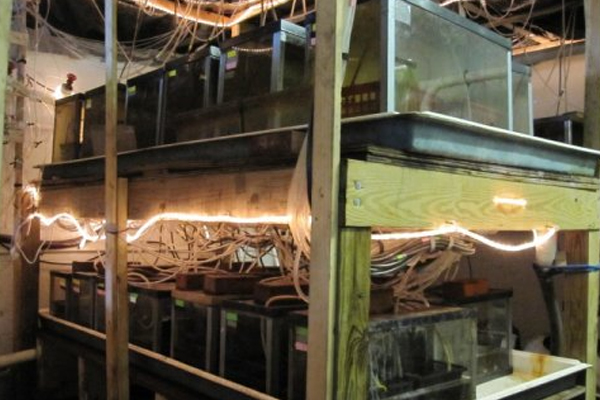Oysters living in low-oxygen zones at greater risk for contracting deadly disease, study finds

Some of the most well-known dead zones in the world are in deep waters: the long-studied one in Chesapeake Bay, the mobile hypoxia of Lake Erie and the Gulf of Mexico’s dead zone that covers an area as large as Connecticut. The effects of oxygen loss on these ecosystems have been the subject of numerous studies, while hypoxia in shallower waters has avoided much of the spotlight.
Scientists from the Smithsonian Environmental Research Center and the Maryland Department of Natural Resources’ Eyes on the Bay program studied how oysters living in shallow waters are affected by diel-cycling hypoxia — that is, oxygen loss tied to day-night cycles. Their findings, published in the journal PLOS ONE, show that oysters living in these areas are more susceptible to the deadly Dermo disease.
The researchers placed hundreds of eastern oysters in submerged cages across 14 sites in the shallows around Chesapeake Bay. After four months, the researchers randomly collected oysters from each cage. They found that a lack of oxygen hinders the oysters’ ability to filter water and fend off the parasite that causes Dermo. Additionally, the researchers determined that oysters living in waters with higher salinity were more vulnerable to the disease. A combination of low oxygen and high salinity increased the disease’s potency, and caused the highest mortality rates among wild oyster populations.

Oyster tanks in the lab mimicked the diel-cycling hypoxia common in shallow estuary waters. (Credit SERC)
Further research in the lab revealed that young oysters exposed to hypoxia were at the greatest risk for infection by the parasite. However, low oxygen didn’t seem to affect the intensity of the disease. This suggests that another factor is at play in natural estuary ecosystems.
Hypoxia occurs worldwide in deep and shallow waters, but functions differently in both. Deep-water dead zones can last for many months at a time, while those in shallow water occur predominantly at night. In the shallows, algae provide oxygen through photosynthesis during the day. The process ceases at night, but organisms continue to use oxygen in the water, resulting in low oxygen levels. Excess nutrients from agriculture, sewage and other contaminant sources can intensify the effects of this process.





0 comments